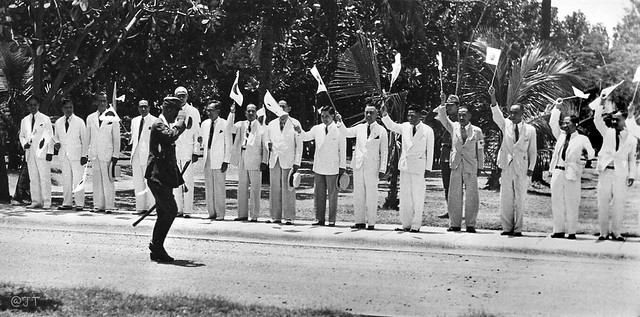
In October, 2013, the country will mark the 70th anniversary of the so-called Second Republic established under Japanese auspices.
In anticipation of that event, the project aims to complete the publication of the Iwahig Prison Diary of Antonio de las Alas, a prominent prewar political and business figure, and member of the Laurel government. His diary, written while he was detained by Allied forces awaiting trial for collaboration, gives a thorough account of the dilemmas and choices made by officials who served during the Japanese Occupation, including their motivations and justifications for remaining in the government.
The diary of de las Alas goes backward and forward in time: starting on April 29, 1945 he details the tedium and petty bickering of prison life, he also gives an insight into politics and society during the Liberation Era, while extensively recounting his experiences during the Japanese Occupation.
Salvador H. Laurel, son of occupation president Jose P. Laurel, was tasked by his father to keep a diary of their going into exile at the hands of the Japanese (see entries from March 21, 1945 to August 17, 1945).
His account bears comparison with the conversations recorded by Francis Burton Harrison, prewar adviser to President Quezon, who again served as an adviser during World War II, when the Philippine government went into exile in Washington D.C. His entries covering the government-in-exile begin on May 30, 1942, and come to an end on May 31, 1944.
In the Philippine Diary project, other diarists put forward different facets of life in the Philippines during the Japanese Occupation.
Charles Gordon Mock, an American originally imprisoned together with other Allied civilians in the University of Santo Tomas, details his experiences as a prisoner-of-war transferred to Los Baños on May 14, 1943.
The experiences of soldiers and guerrillas are captured in the diary entries of Ramon Alcaraz –his entries chronicle the transformation of a prisoner-of-war into a soldier serving in the Japanese-sponsored Philippine Constabulary: and how he used his Constabulary postings for guerrilla activities (the progression of this development can be gleaned from a sampling of entries: June 30, 1942; August 3, 1942; August 30, 1942; February 20, 1943).
The diary of Felipe Buencamino III ends with his first few weeks as a prisoner-of-war in the concentration camps established by the Japanese; but he resumes his diary on September 21 1944, at the tail end of the Japanese Occupation (see October 2, 1944 for an example of the growing anticipation of the end of the Occupation): in fact, his diary ends just at the moment of Liberation.
His father, Victor Buencamino, chronicles the frustrations, fears, and tedium of being a mid-level official still serving in the government, not so highly-placed as to be ignorant of public opinion, but also, trapped between public opinion and his own problems as someone in government. His diary serves as a counterpoint to the diaries of soldiers and officers in the field, and to the other diaries describing life during the Occupation.
Two other diaries remain to be uploaded extensively, namely the Sugamo Prison diary of Jorge B. Vargas, onetime Chairman of the Philippine Executive Commission, and Laurel’s wartime ambassador to Japan, and the diary of Fr. Juan Labrador, O.P, a Spanish Dominican who kept a diary during the Japanese Occupation. But perhaps these will have to wait for future anniversaries.
You can browse the entries of the diarists mentioned above by clicking these links to view their entries in reverse chronological order: